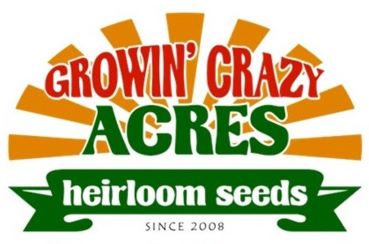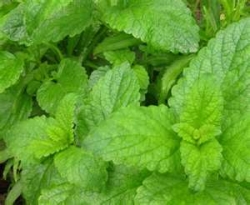Growing Lemon Balm
Common name for Melissa officinalis, an aromatic, sweet herb of the Mint Family grown in the herb garden for seasoning, and also used in liqueurs and historically, as a medicine. It grows to 2 feet tall and has small 2-lipped flowers in late summer, and leaves with a very strong lemon odor and flavor.
This herb is relatively easy to cultivate outdoors in USDA Plant Hardiness Zones 4 through 9. In zone 4, it needs winter mulch and a well-drained sandy soil to survive.
In zone 7, it can be harvested at least until the end of November. It is moderately shade-tolerant, much more so than most herbs. In dry climates, it grows best in partial shade.
Lemon balm grows in clumps and spreads vegetatively as well as by seed. In mild temperate zones, the stems of the plant die off at the start of the winter, but shoot up again in spring. It can be easily grown from stem cuttings, or from seeds. Under ideal conditions, it will seed itself prolifically and can become a nuisance in gardens.
Growing Cultures
Outdoors, containers, hydroponics.
Plant Height
Lemon balm grows to a height of 12 to 18 inches (30 – 45cm).
Plant Spacing
Lemon balm plants should be spaced between 12 and 15 inches (30 and 38 cm) apart.
Preferred pH Range
Lemon balm will grow in a relatively wide pH range between 5.6 (acidic) and 9.0 (strongly alkaline) with a preferred range of 6.0 to 7.5.
Propagation
From seed. Start seeds indoors six to eight weeks before last frost.
Seed Germination Period
12 to 21 days.
Seeds Per Gram (Approximate)
2,000
Soil Requirements
Fertile, well-drained clay or sandy loam.
Alternative Growing Media
Soilless potting mixes, perlite, vermiculite, rockwool, coco peat, Oasis foam.
Time From Seed to Saleable Plant
Seeds to finished plugs, 6 weeks; plugs to saleable plants, 5 weeks.
Sun & Lighting Requirements
Lemon balm grown outdoors prefers full sun, but is mildly shade-tolerant. In dry climates, it grows best in partial shade.
Lemon balm will grow indoors satisfactorily under standard fluorescent lamps, and exceptionally well under high output fluorescent , compact fluorescent, or high intensity discharge (metal halide or high pressure sodium) plant growing lights. Keep standard fluorescent lamps between 2 and 4 inches from the tops of the plants, high output and compact fluorescents approximately one foot above the plants, and HID lights between 2 and 4 feet above the plants, depending on wattage. Have an oscillating fan gently stir seedlings for at least 2 hours per day to stimulate shorter, sturdier, and more natural plant habit.
USDA Hardiness
Zones 4a through 9b.
Water Requirements
Requires consistently moist soil, do not let soil dry out in between waterings. Water on a regular schedule, taking care to not overwater.
Potential Pests & Diseases
Whitefly, spider mite, thrip. Susceptible to powdery mildew.
Special Notes
Lemon balm may be considered a noxious weed or invasive plant in some areas. Lemon balm is drought tolerant and is useful in xeriscaping. Lemon balm is known to attract bees, butterflies or birds and has fragrant blossoms. Lemon balm self-sows freely; remove flowers (deadhead) if you do not want volunteer seedlings the following season.

